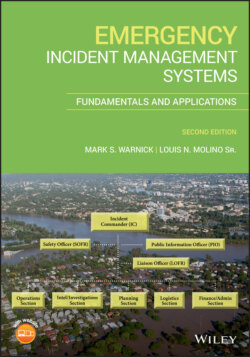Читать книгу Emergency Incident Management Systems - Mark Warnick S., Louis N. Molino Sr - Страница 87
3.23 Russia
ОглавлениеRussia is a country that rarely shares all of the information about how they operate. It should be no surprise that only a small amount of information is known about how they manage incidents such as natural disasters and terrorist attacks. From research, it was found that the Russian government utilizes the military for the vast majority of emergency services. A military type of Command and Control system and also a Unified Emergency Prevention and Response State System (RSChS) as well as the Emergency Control Ministry (EMERCOM) are used in Russia.
After the 1988 Armenian earthquake and the Chernobyl disaster, a directive decision was made by the Presidium of the Supreme Council of Russian Socialist Soviet Republic. This directive essentially led to the formation of the Russian Rescue Corps, the predecessor of the current system: The Ministry for the Affairs of Civil Defence, Emergency Situations and Disaster Relief, Russian President Boris Yeltsin established the Ministry of the Russian Federation for Affairs for Civil Defence, Emergencies and Elimination of Consequences of Natural Disasters. After the formation, this became known as the Ministry of Emergency Situations. It was also called the Emergency Control Ministry or EMERCOM. In 2002, the Russian State Fire Service, which was originally the National Fire service, also became part of the Emergency Control Ministry (State Committee for Civil Defence, 2009). While local police, fire, and EMS handled daily problems, EMERCOM essentially became the equivalent of the Federal Emergency Management Agency (FEMA) in the United States. This reorganization was said to have affected incident management, but because only minimal information was provided, it is not certain how it affected incident management.
Roffey (2016) states that in 2004, Russian President Vladimir Putin approved the “Fundamentals of the Unified State Policy in the Field of Civil Defense for the Period up to 2010.” This document created the groundwork and the jurisdiction for civil defense in the new political (and socioeconomic) conditions. In creating these fundamentals, objectives were defined, and guidance was given in how to implement the policy. In 2011, the Civil Defense Troops were changed into military rescue units and were melded into the already existing Search and Rescue Service within EMERCOM. Goals were identified, and plans were made for civil defense, with a completion date of 2020. These goals were to improve the current methods of protecting the Russian population, protecting resources and objects of cultural value against consequences due to military operations, and handling emergency situations due to natural and man‐made disasters. Additional goals included developing services to be used for civil defense, preserving the existence of the Russian people during a time of war, cultivating the structures of education and training in the field of civil defense, and evolving international cooperation in the field of civil defense. In 2015, additional regular military defense units were earmarked to be available for handling natural disasters. A total of 12 000 soldiers from army units, railway troops, engineering and logistics troops, and airborne troops have been folded into the mix. Perhaps the most curious bit of information is that Russia was a signer and complied with the Hyogo Framework; however, there is no mention of what IMS method was used, or how they integrated with outside resources (Roffey, 2016). Due to the fact that the overall organization is military based, incidents are managed in a military style of leadership when it is a larger emergency than the local government can handle. It is still not known what IMS method is used by local governments, or if it is a mix of different IMS methods. No further information could be found on the IMS methods used in Russia, including the Hospital Incident Command System (HICS).
